Porcelain enamel can be a tricky material to cook with. While the smooth enamel coating works wonderfully to heat meals evenly and quickly, it can become damaged if it's not treated with care. So, what do you do if you chip your enamel Dutch oven? Can you repair it? If so, how? We researched the steps to take if this happens. In this post, we will go over them.
In many cases, where the chip is relatively small, you can fix the Dutch oven. However, it's best to follow the manufacturer's recommendations before applying any type of repair solution to it. Here is a general list of steps that you can follow to fix chips and cracks in your Dutch oven:
- Clean the Dutch oven
- Apply an epoxy solution
- Sand the newly repaired area
- Paint the repaired area [optional]
Most Dutch ovens are typically more expensive than other cookware materials, including stainless steel and carbon-coated pots. And if you find a crack in your Dutch oven, you should refrain from using it until it's repaired. Let's take a closer look at preventing cracking the oven and what to do if this happens.

Steps To Fix A Chipped Enamel Dutch Oven
Sometimes chipping will occur slowly over the years from improper care or everyday wear and tear. Though it's possible to repair these cracks and chips in some cases, in others, a replacement may be a better idea-especially if the oven is over seven years old.

Things you'll need:
- Enamel repair kit
- Lint-free cloths
- Fine-grit Sandpaper
- Wax paper (unless the kit comes with it)
- All-purpose cleaner or dishwashing liquid
1. Clean the Dutch oven
For repairing the crack or chips, it's essential first to clean the oven as well as the broken pieces. This will ensure that the epoxy adheres well to the surface.
Take a lint-free cloth and use the dishwashing liquid all-purpose cleaner to remove any Dutch oven's grime, debris, or dirt. Be sure not to scrub it too roughly, as you don't want to exacerbate the damaged areas.
Check out this Dutch oven on Amazon.
2. Apply the epoxy solution
Many of these epoxy solutions come with two solutions that must be combined before they can be applied to the surface. Be sure to read the instructions on integrating the epoxy with the hardener beforehand. Once you have them mixed, apply the epoxy to the area on the Dutch oven that has the chip.
Wait a few minutes for the epoxy to slightly harden, and then grab a small piece of wax paper to set directly on top of it. Apply a small amount of pressure to the paper so that you can flatten the epoxy against the pot. After about 5-10 minutes, remove the wax paper so that the epoxy can dry completely.
3. Sand the newly repaired area
After the epoxy has completely dried, take your sandpaper and gently sand the repair area around the edges. Sand the top as well and ensure that the area is flush all the way around and even with the rest of the pot's surface.
Use extreme caution when working with the sandpaper, as you don't want to accidentally sand any finish outside the damaged area. If needed, fold the paper in half or fourths.
4. Paint the repaired area (optional)
While this step is optional, it will make your Dutch oven repair look more professional. Grab a small paintbrush and a food-safe, enamel-based paint. Apply the paint to the area that you just repaired. Let the first coat dry, and then apply an additional coat. Let the pot sit for 24-48 hours before using it again.
Find this paintbrush set on Amazon.
Can you use a Dutch oven if the enamel is chipped?
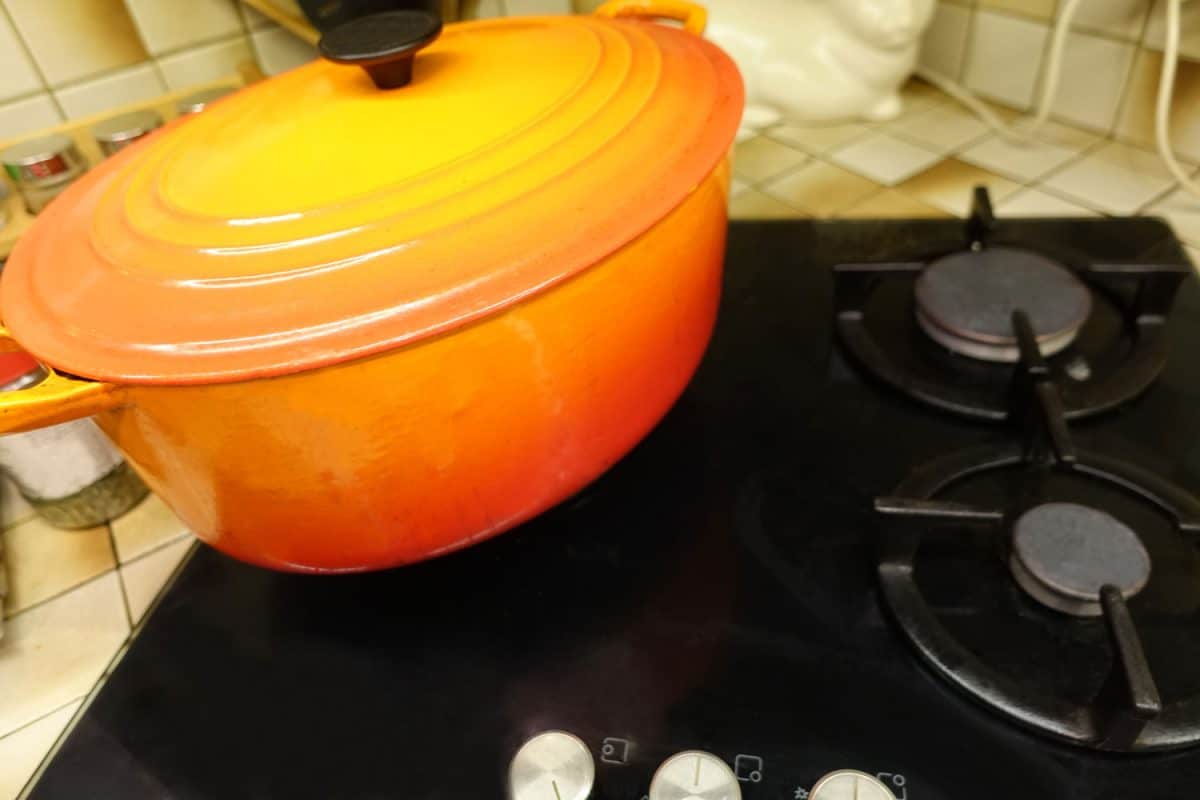
It depends. If the enamel is chipped on the outside of the pot and the damage is minor, it may not be of a big concern. In some cases, you may be able to still use the pot.
However, many manufacturers will recommend repairing or replacing the pot if the crack is located on the inside of the pot or if it's significant. The biggest issue with using a damaged enamel pot is that the damage can spread, resulting in you having pieces of broken porcelain in your food.
Is it OK to use chipped Le Creuset?
According to Le Creuset, you shouldn't use these pots if they are chipped, especially if the chip is inside the pots. The reason is because of the one listed above. The chip can spread, causing broken pieces of porcelain to fall into your food.
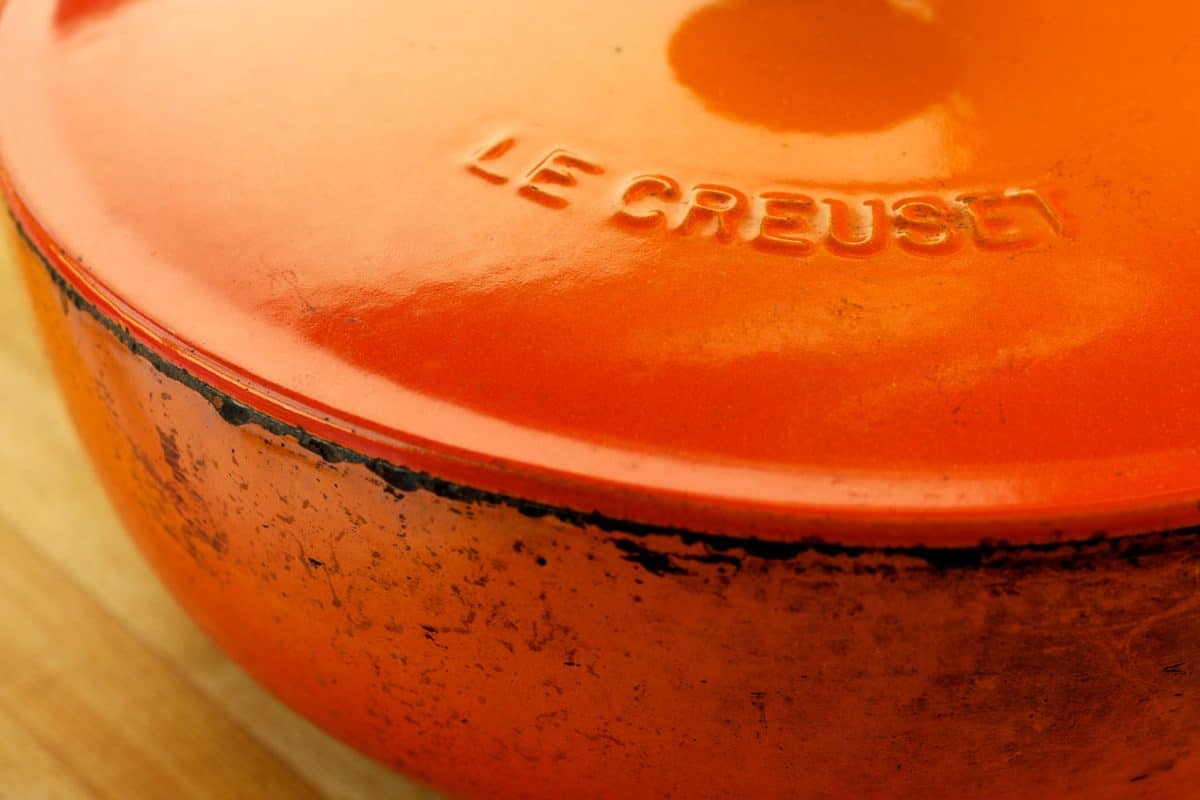
Also, if the chipped area is large enough, it could lead to more damage, which can cause the Dutch oven to break up while in use.
This can be very dangerous. If your Le Creuset pot becomes chipped, it's best first to check the warranty information to see if it's still covered. Like Les Creuset, many cookware manufacturers have great coverage options for damaged cookware.
Is enamel coating toxic?
While enamel isn't necessarily toxic, it can be hazardous if consumed. The coating used for Dutch ovens is usually a mixture of enamel-based paint and other finishes.
These finishes and paints are not toxic, as it would make them unsafe to use on the ovens. However, if you suspect that your Dutch oven has peeling paint or finish, it's best to replace it to be on the safe side.
Ways to Prevent Chipping and Cracks
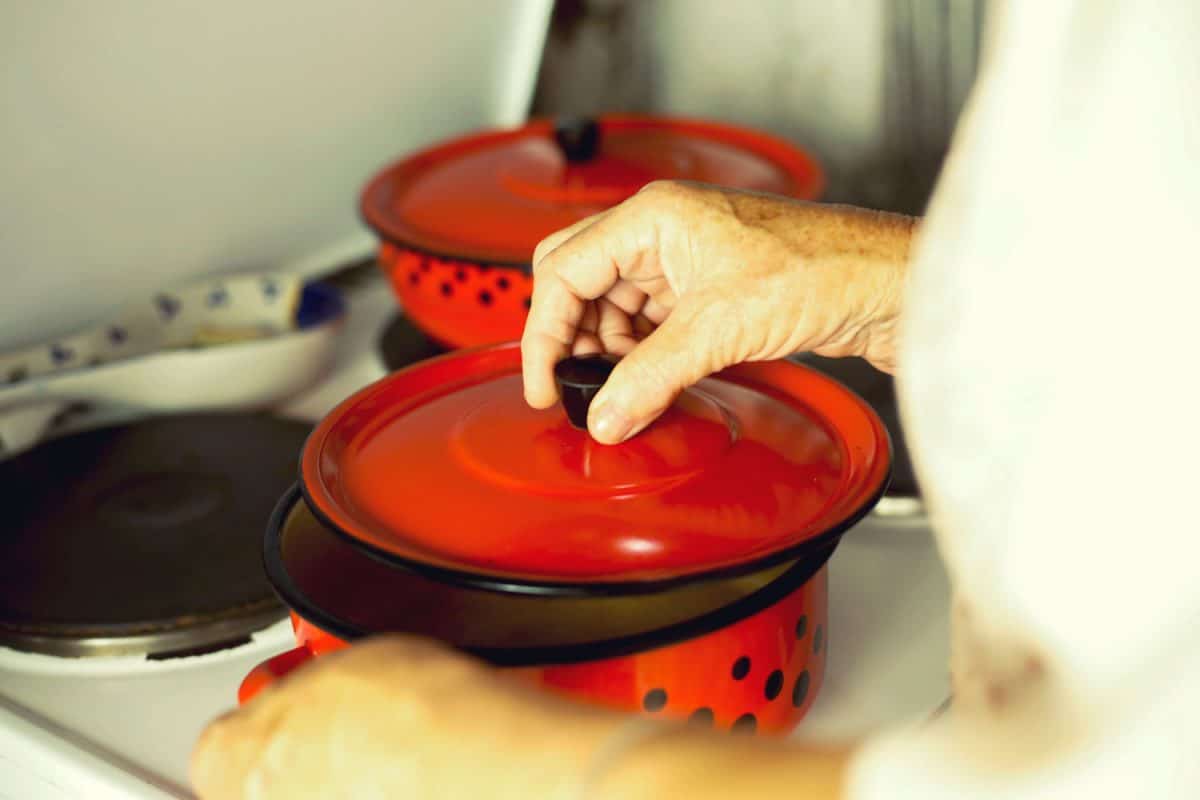
You can take preventive measures to keep cracks and chips to a minimum.
Don't always buy the cheapest oven
First, it's best to purchase a Dutch oven that's made from a reputable manufacturer and comes with a warranty. All Dutch ovens aren't created equal.
And while some may be inexpensive, they may lack when it comes to quality and endurance. This means that when it comes to purchasing solid cookware, the extra money spent can be well worth it in the long run.
Don't subject your Dutch oven to drastic temperature changes
Try not to immediately place a hot Dutch oven directly in the refrigerator or freezer. The extreme temperature change can cause the enamel to crack. It's also best not to do the reverse.
So if you've just removed your Dutch oven from the refrigerator, let it sit at room temperature for about 15 minutes before placing it on or inside the oven, which brings us to another point.
Don't store your Dutch oven in the refrigerator
Dutch ovens are meant to be stored at room temperature. Your average refrigerator is about 40 degrees Fahrenheit, which is too cool for storing these enamel-based cookware items. It can make them more susceptible to chipping, not to mention spontaneous breaking and cracking.
Don't heat an empty Dutch oven
Always make sure that the Dutch oven has food or liquid before heating it. This is especially true when you have it set at a high temperature. And if you're cooking at high temperatures, make sure that there is a sufficient amount of liquid in the pot.
Don't use metal utensils
One surefire way to quickly get scratches on your Dutch oven is to use metal utensils when cooking with it. Opt for silicone, wood, or rubber spatulas and spoons-ditch the metal.
Check out this wood utensil set on Amazon.
Don't place the pot in the dishwasher
It's always best to manually wash your Dutch oven by hand. Though some dishwashers are safer than others, handwashing prevents the Dutch oven from accidentally being subjected to harsh water temperatures and detergents, ultimately damaging the finish.
Remove stains and grime immediately
It's best to clean your Dutch oven immediately after using it. However, this means letting it cool down beforehand. If you need to, soak the Dutch oven in warm soapy water to easily remove caked-up dirt and grime from the pot.
You'll also want to avoid using harsh scrubbers and wool pads on the pot as well. It's best to wipe away and soak dirty regions before they have a chance to dry and set on the enamel.
Wrapping Things Up
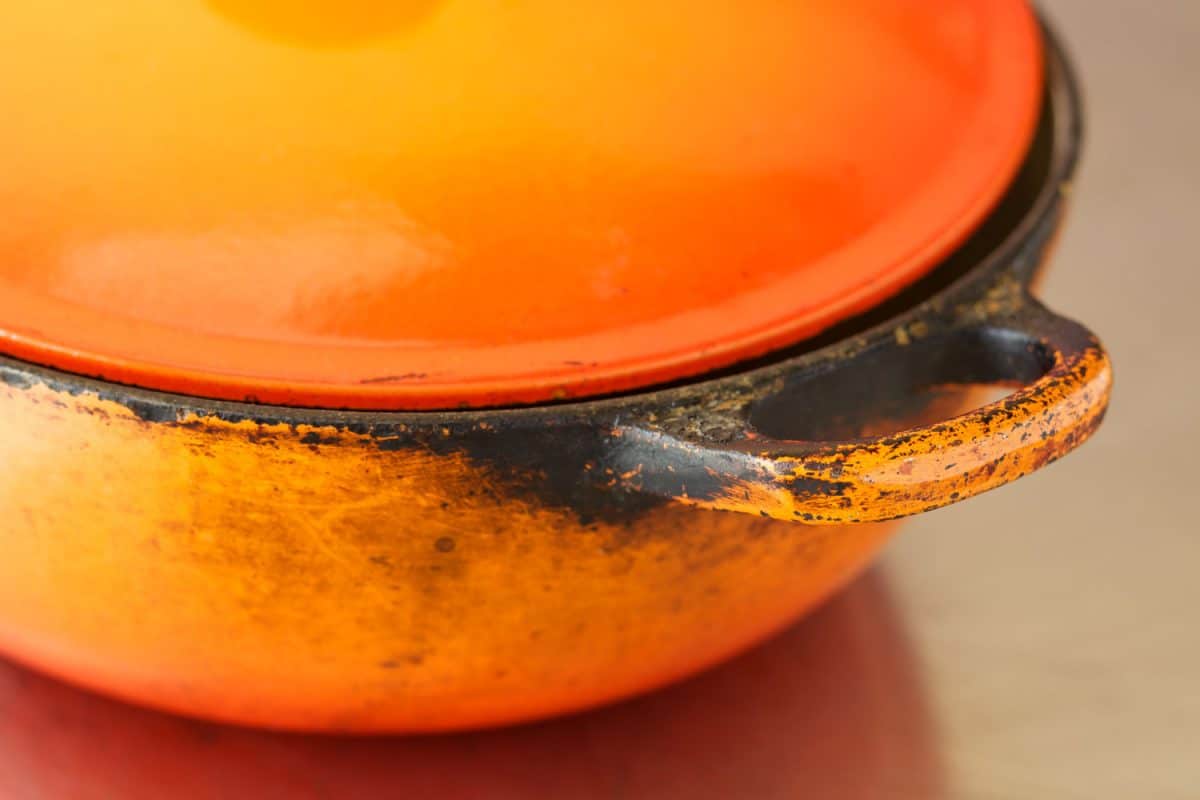
A Dutch oven is one of the best cookware items you can have in your kitchen. It allows for easy, convenient, and versatile meal options.
And if you find small cracks or chips on its surface, they can be repaired in some cases. However, it's best to note the manufacturer's recommendations for repairing, cleaning, and maintaining the pot to prevent damaging it.
How To Clean An Enamel Dutch Oven [A Complete Guide]
How Long To Bake Sourdough Bread In Dutch Oven?




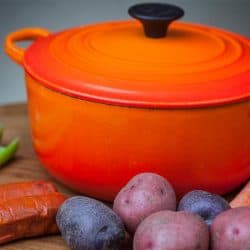



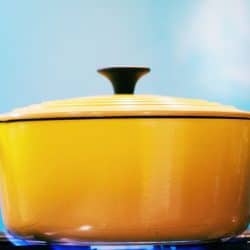

Is the repair advice for internal damage?